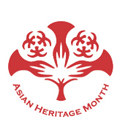Chinese Monument Project
History, Education
In 1919, over 500 Chinese labourers came to Prince George, British Columbia, to build the Pacific Trunk Railway in the region and 83 years later, the city had a Chinese Canadian population of almost 1,000 people, according to Statistics Canada. On 4 August 2002, a monument was dedicated to the legacy of the Chinese forefathers and the memory of many Chinese Canadians in this region.
"This monument stands to remind us of our roots," said Chow. "We have an old saying that a tree cannot live without its roots."
The Chinese Monument commemorates the contribution of Chinese Canadians to Prince George and surrounding areas. Early Canadians of Chinese origins provided services by operating restaurants, laundries and grocery stores, which were very much needed in the development of the city. They also came to build the railroad. In later years, Chinese Canadians of different walks of life settled in Prince George.
The erection of the Monument was a joint venture between the City of Prince George and the Chinese community and took a year and a half to complete. The project was managed by the Prince George Chinese Heritage Preservation Committee. Lily Chow chaired the Committee and its board members included: Vicki Peng, Lily Chow, Chandra Wong, Michael Wu, Karry Chow, Theddaus Lee, Simon Yu and Eddie Kam.
Supporters of the project included the Chinese Freemasons, the Chinese Benevolent Association, Chee Duck Tong, the Chinese Student and Professional Association, Prince George Canada-China Friendship Association, multicultural organizations, and many individuals and businesses in town.
The dedication ceremony included greetings from the City of Prince George and from Mr. Lee Yuan Ming, the Consul General of the People's Republic of China. Wreathes were laid by several organizations: City of Prince George, Consul General, Prince George Chinese Benevolent Association, Freemasons Headquarters of Canada, Dart Coon Chek Headquarters of Canada, Vancouver Chinese Freemasons, Edmonton Chinese Freemasons, Prince George Chinese Freemasons, Prince Rupert Chinese Freemasons, Prince George Chee Duck Tong, Prince George Chinese Student and Professional Association and the Prince Rupert Chinese Association.
Lions dance troupes from Edmonton and Vancouver participated in the dedication ceremony. In Chinese customs and traditions, the lion dance is usually performed at the beginning of any celebration. The lions will bring good luck and ward off evil spirits. The lion dance usually begins with the awakening of the lion, which can be observed with the closing and opening of the eyes, its yawning and the stretching of limbs followed by the cleaning of the face with its limbs. The dance usually ends with the lion being able to capture the vegetable or evergreen, a symbol of longevity.
The offering of incense at the ceremony was meant to appease the spirits of the deceased relatives and friends and offer peace and harmony. The burning of paper money ensured the spirits have the means to live comfortably in the other world.
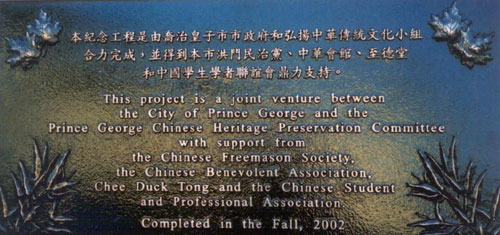
Back of the Monument
Photograph provided by: Lily Chow
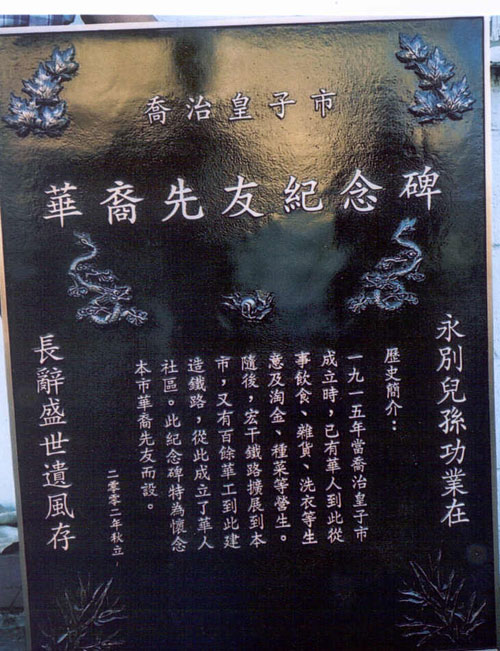
A section of the Monument's main plaque
Photograph provided by: Lily Chow
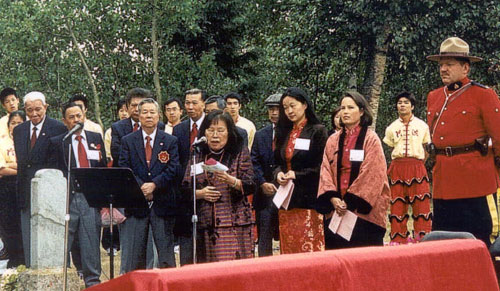
Lily Chow, Chair of the Prince George Chinese Heritage Preservation Committee, delivering the dedication speech on 4 August 2002.
Photograph provided by: Lily Chow
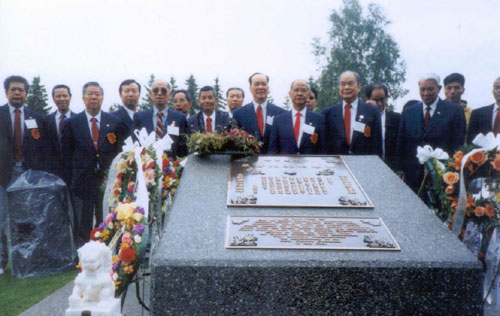
Chinese Freemasons at the dedication of the Chinese Monument.
Photograph provided by: Lily Chow
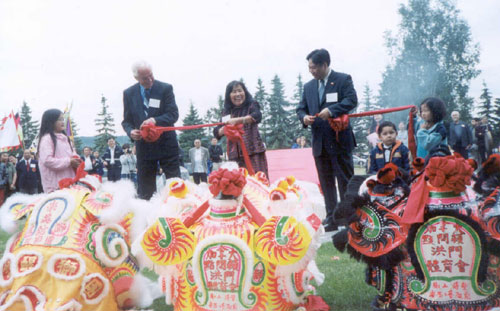
(From left) Prince George Deputy Mayor Dan Basserman; Lily Chow, Chair of the Prince George Chinese Heritage Preservation Committee; and Mr. Li Yuan Ming, Consul General of the People's Republic of China at the Monument dedication ceremony.
Photograph provided by: Lily Chow
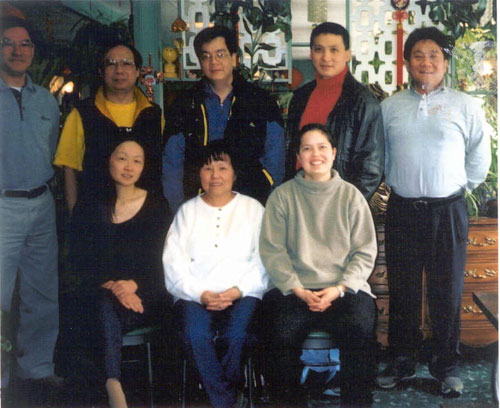
Prince George Chinese Heritage Preservation Committee board members
(Front Row, from left): Vicki Peng, Lily Chow, Chandra Wong (Back Row, from left): Michael Wu, Karry Chow, Theddaus Lee, Simon Yu and Eddie Kam
Photograph provided by: Lily Chow
The project was made possible with the support of the Department of Canadian Heritage through the Canadian Culture Online Strategy
